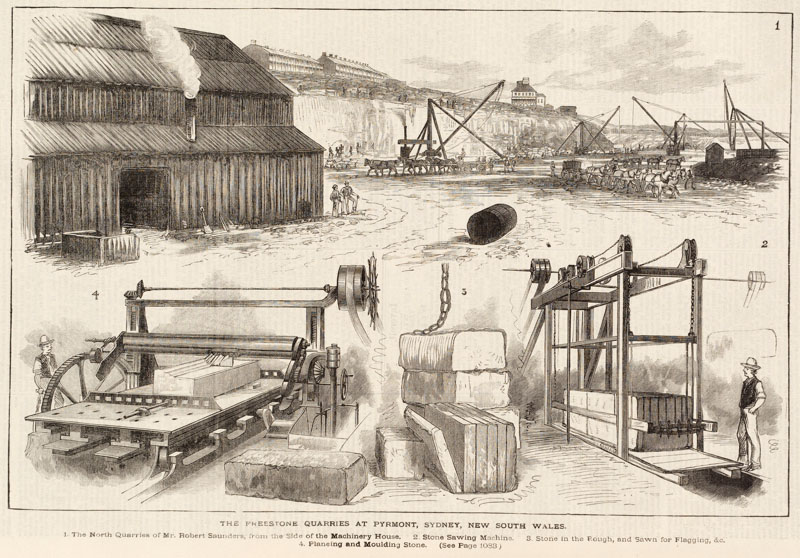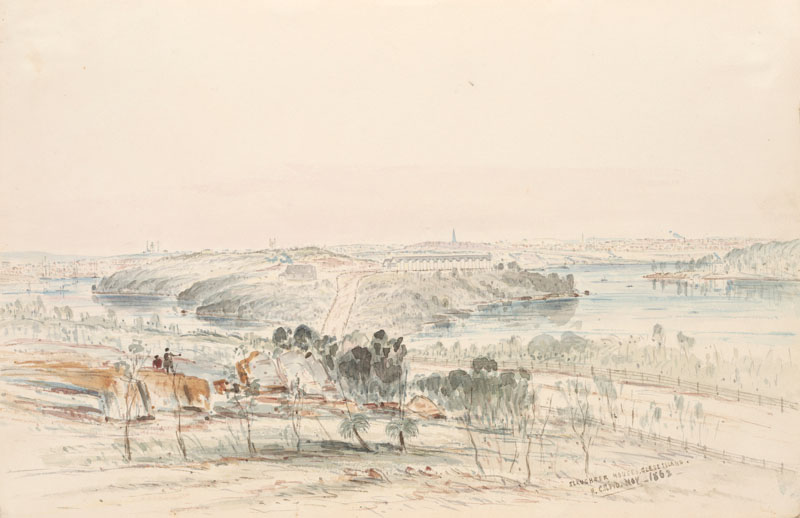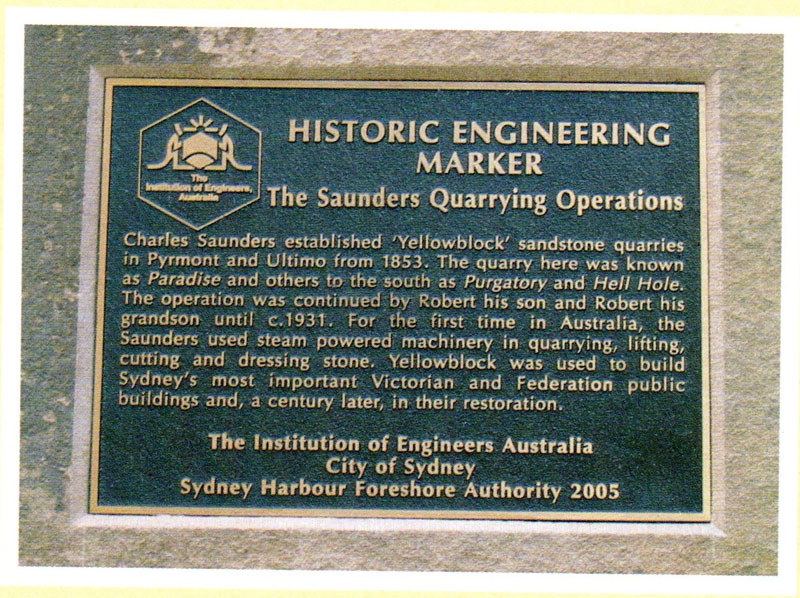Silk
Date Built: 2012
Architect: Tony Caro Associates
19 storeys, 88 apartments, 12 terraces. Overlooks Waterfront Park. Site of CSR storage tanks
Sugar Dock & Silk
1850 - 1910
The present land form was shaped by colonial industry: from the 1820s onwards, quarrymen demolished a rocky outcrop. At first, the stone was hewn as ballast for the sailing ships that anchored nearby; later it was carried by barges to city building sites.
Stone masons and architects delighted in the yellowblock sandstone that was so easily quarried and gained a warm, golden colour when exposed to the air. They remembered these qualities in the 1850s, when the gold rushes made Sydney a wealthy town, needing impressive public buildings.
To meet this increased demand, quarrying was mechanised and conducted on a large scale. Roads were built and Clydesdale horses replaced the barges. Saunders’s quarries employed many of the masons who formed Australia’s first successful trade union.
While the major quarries (Paradise, Purgatory, Hellhole) were developed further south, the flattened landscape at the point drew the City Iron Works which operated on the shoreline from 1865 until the 1930s. The foundry adjoined an arterial road, which became busier in 1903, as swing bridges carried cars and trams from Balmain through the peninsula to the city. Commuters crossing Glebe Island Bridge tried to ignore the Iron Works and (from 1910) the new incinerator on Abattoir Road (now renamed Bank Street). The incinerator put an end to the furtive dumping of rubbish in abandoned quarries: but smoke from its high tower continued the tradition of air pollution on this site.
















